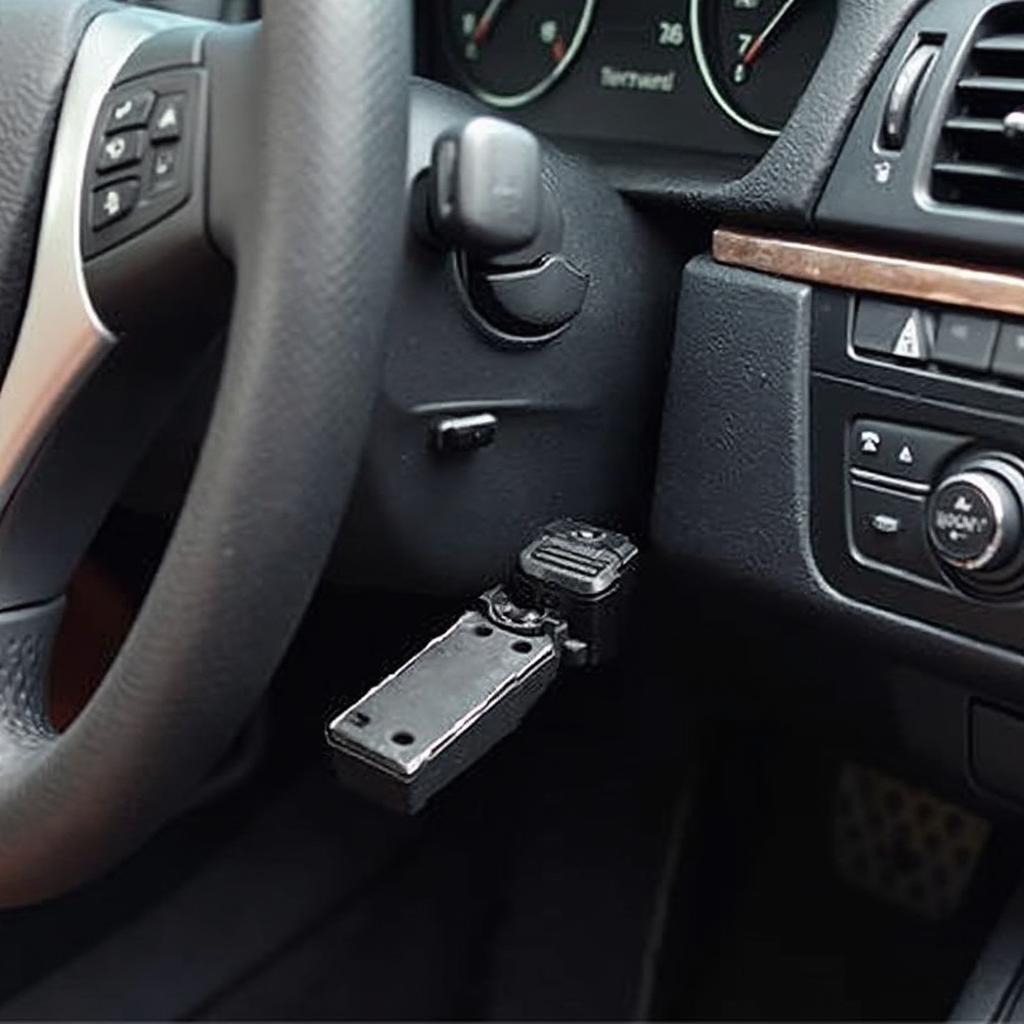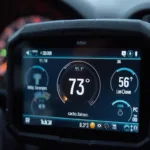Locating the OBD2 port in your BMW 3 Series is essential for diagnostics and maintenance. This guide provides a detailed explanation of where to find it, covering various model years and common issues.
Pinpointing the OBD2 Port in Your BMW 3 Series
The OBD2 port, also known as the diagnostic link connector (DLC), is a standardized 16-pin connector that allows access to your vehicle’s onboard computer. It’s crucial for retrieving diagnostic trouble codes (DTCs), monitoring vehicle performance, and programming various systems. For BMW 3 Series owners, knowing its location is vital for troubleshooting and DIY maintenance.
Common OBD2 Port Locations in BMW 3 Series
Typically, the OBD2 port in a BMW 3 Series is located under the dashboard, on the driver’s side. More specifically:
- Under the steering wheel: This is the most common location across various 3 Series models. You might need to look up under the dash, near the pedals.
- Behind a panel or cover: Some models may have a small panel or cover concealing the port for a cleaner aesthetic. Gently check for removable panels in the under-dash area.
- Near the glove compartment: In some less common instances, the port might be situated near the glove compartment, either below it or behind a panel on its side.
 OBD2 port location under steering wheel in BMW 3 Series
OBD2 port location under steering wheel in BMW 3 Series
Variations by Model Year
While the general location remains consistent, there might be slight variations depending on the specific model year of your BMW 3 Series. Consulting your owner’s manual is always the best approach for precise information. However, here are some general guidelines:
- E36 (1992-1999): Generally located under the dashboard, driver’s side, near the steering column.
- E46 (1999-2006): Similar to the E36, typically found under the dashboard on the driver’s side.
- E90/E91/E92/E93 (2005-2013): Also under the dashboard, driver’s side, often behind a small panel.
- F30/F31/F34/F35 (2012-2019): Continues the trend of being under the dashboard on the driver’s side.
- G20 (2019-present): Also situated under the dashboard on the driver’s side.
Troubleshooting Common Issues
Sometimes, locating the OBD2 port might be trickier than expected. Here are some common issues and solutions:
- Can’t find the port: Double-check the common locations mentioned above, consult your owner’s manual, or use a flashlight to inspect the under-dash area thoroughly.
- Obstructed port: If the port is obstructed by another component or wiring, carefully move the obstruction aside. Avoid using excessive force.
- Damaged port: If the port appears damaged, consult a qualified mechanic for repair or replacement.
Why is Knowing the OBD2 Port Location Important?
Knowing where your OBD2 port is located allows you to perform various tasks, including:
- Diagnosing problems: Retrieve and interpret DTCs to understand the root cause of vehicle issues.
- Monitoring performance: Track various parameters like engine speed, coolant temperature, and fuel economy.
- Customizing settings: Program certain vehicle features like automatic door locking or lighting preferences (depending on the model and year).
- Passing emissions tests: The OBD2 port is used during emissions testing to verify compliance with regulations.
Conclusion
Locating the OBD2 port in your BMW 3 Series is a straightforward process once you know where to look. This knowledge empowers you to perform basic diagnostics and maintenance, saving you time and money. Remember to consult your owner’s manual for model-specific information.
FAQ
- What is the OBD2 port used for? It’s used for diagnostics, monitoring performance, and programming certain vehicle systems.
- Where is the OBD2 port located in most BMW 3 Series models? Under the dashboard on the driver’s side.
- What should I do if I can’t find the OBD2 port? Double-check common locations, consult your owner’s manual, or use a flashlight.
- Can I damage the OBD2 port? Yes, excessive force or improper use can damage the port.
- What if my OBD2 port is damaged? Consult a qualified mechanic for repair or replacement.
- Why is it important to know the location of the OBD2 port? It allows for self-diagnosis, performance monitoring, and some customization options.
- Does the OBD2 port location vary between BMW 3 Series models? There might be slight variations depending on the model year.
Need help? Contact us via WhatsApp: +1(641)206-8880, Email: [email protected] or visit us at 789 Elm Street, San Francisco, CA 94102, USA. We offer 24/7 customer support.
